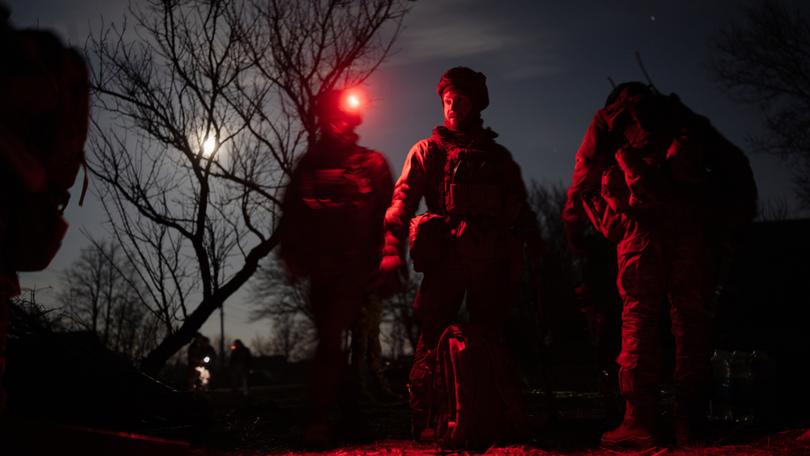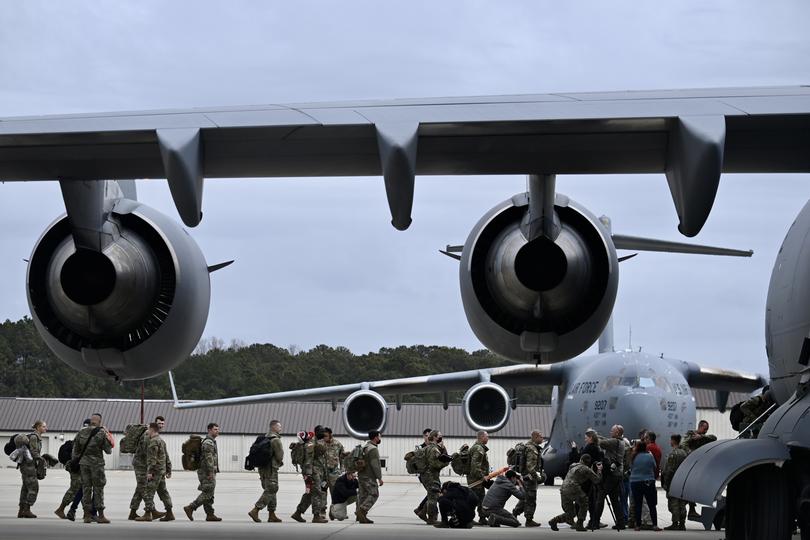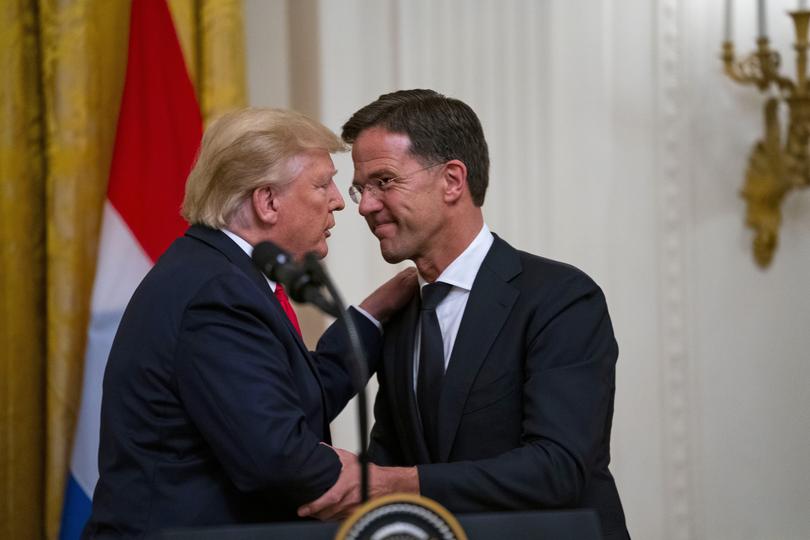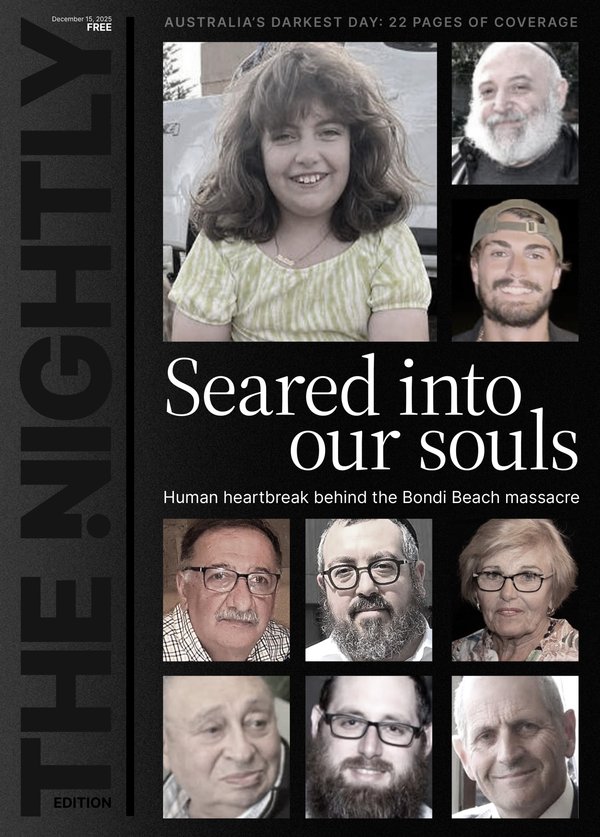THE NEW YORK TIMES: Europe prepares to face Russia as Donald Trump’s America steps back

BRUSSELS — European leaders are racing to try to figure out how to fill a potential void — in Ukraine and in continental security as a whole — as President Donald Trump’s White House talks of dialling back U.S. support and troop numbers in Europe.
As the war in Ukraine marks its third anniversary and the threat of an emboldened Russia looms, top European officials are flocking to Ukraine’s capital, Kyiv, on Monday in a show of solidarity.
At the same time, European foreign ministers will be meeting in Brussels, where they are expected to debate how much to send to Kyiv in their next support package.
Sign up to The Nightly's newsletters.
Get the first look at the digital newspaper, curated daily stories and breaking headlines delivered to your inbox.
By continuing you agree to our Terms and Privacy Policy.That plan started with figures in the single digits but could end up totalling more than 20 billion euros (about $21 billion), according to two people familiar with the discussions who spoke on the condition of anonymity to discuss internal deliberations. The ministers are also expected to approve a fresh package of sanctions on Russia, which may not please the White House as Trump draws closer to Russian President Vladimir Putin.
More broadly, European leaders are also contemplating the prospect of putting troops on the ground in Ukraine as some sort of peacekeeping or “reassurance” force, officials say. Additionally, they are discussing how to ramp up military spending more generally, with a blueprint for the future of European defense expected to be proposed by the European Commission in mid-March.
And given the turmoil and uncertainty around the U.S. commitment to Europe, António Costa, the president of the European Council, announced Sunday night that he would convene a special meeting of European leaders March 6 to discuss Ukraine and European defense.
The flurry of activity comes at a head-spinning moment for Europe. Up to now, the United States has been a major supporter of Ukraine’s resistance against Russia’s invasion diplomatically, financially and militarily, pulling the allies together three years ago in the leadership role it has played since World War II.
But Trump is in the process of upending that, or at least threatening to do so.

He shocked European leaders last week when he appeared to blame Ukraine’s leaders for Russia’s invasion. He called Ukrainian President Volodymyr Zelenskyy a “dictator without elections.” He has declared that the outcome of the war matters much more to Europe than to America, which is separated from the outcome by what he called a “big, beautiful ocean.”
It is not clear yet whether America will slash military spending in Europe. But leaders are increasingly worried that the United States could pull out thousands of troops, as Defense Secretary Pete Hegseth recently suggested. That could leave Europe — especially smaller members of the NATO alliance — vulnerable to an aggressive Russia.
After the Russian invasion, then-President Joe Biden increased the number of U.S. troops in Europe by 20,000, which European officials think might be the first to go.
The upshot for Europe is that the future of defense could look more independent — but also more challenging.
“Financially and militarily, Europe has brought more to the table than anyone else. And we will step up,” Ursula von der Leyen, the president of the European Commission, the bloc’s executive arm, said in a statement last week on the social platform X, following a meeting with an American envoy to Ukraine, Keith Kellogg.
“Now is a critical moment,” she said.
Europeans have been ramping up spending on defense for several years, especially since the Russian invasion. But they remain far away — in both spending and military capacity — from a level that would allow them to manage without the United States.
The United States has spent about $119 billion on the war in Ukraine, with $67 billion of that in military spending, according to one frequently used tracker. Europe has spent $65 billion on military aid — slightly less — though it has spent $21 billion more than the United States on humanitarian and financial aid.
For now, European leaders are doing their best to keep the United States at the table, both on Ukraine and on other military matters of joint importance. Leaders have emphasised their willingness to meet Trump’s demands that Europe take prime responsibility for its own defense.
“We stopped whining and started acting, getting our act together,” Mark Rutte, the secretary-general of NATO, said in a speech last week. He referred to “what I think is an important initiative from President Trump, which is to get Ukraine to a lasting peace.”

If the United States were to pull back support in a big way, it would be costly and difficult to replace, both in military personnel and in sophisticated military equipment. Even if Europe ordered such hardware now, it would take up to a decade to receive it.
A recent study by the think tank Bruegel argued that, to go it alone without the United States, Europe would need perhaps 300,000 more troops, military spending of perhaps 3.5% of economic output and a rapid stockpiling of munitions.
“Credible European deterrence — for instance, to prevent a rapid Russian breakthrough in the Baltics — would require a minimum of 1,400 tanks, 2,000 infantry fighting vehicles and 700 artillery pieces,” the study argued. “This is more combat power than currently exists in the French, German, Italian and British land forces combined.”
Rutte is among those who have emphasised that pushing forward without America is not practical in the near term, given how critical it is to modern defense capabilities.
But some European leaders — notably French President Emmanuel Macron — have been calling for a greater push for Europe to take care of its own defense, within the NATO alliance. Now European leaders such as Friedrich Merz, who is expected to become Germany’s next chancellor following Sunday’s election, are questioning whether even the NATO alliance can remain credible.
Macron is set to visit Washington on Monday and has said he plans to urge Trump not to “be weak” against Putin. British Prime Minister Keir Starmer will also visit the White House later in the week.
Last year, Macron floated the idea of putting European troops on the ground in Ukraine after a settlement to end the fighting, and Starmer has committed to considering the same. But Starmer said it would work only if the United States acted as a “backstop.”
Trump has said that there will be no U.S. troops on the ground in Ukraine, but he has not ruled out, so far, the possibility of American air cover. A “backstop” would commit the United States to coming to the military aid of European peacekeepers if they were attacked by Russia or anyone else, and there is little indication that Trump is in favor of that.
Further, Putin has made it clear that he will not accept the presence of European troops on the ground in Ukraine in any settlement.
For now, part of the priority for Europe is to make sure that it has a seat at the table as peace agreements are being forged.
“This is how we see this negotiation table: Ukraine as part of Europe, Europe, the United States and Russia,” Zelenskyy said at a forum Sunday.
After the shock of the Munich Security Conference, where American hostility to Europe was articulated by Vice President JD Vance, Macron convened meetings of European leaders at the Élysée Palace to discuss how to forge a strategy for Ukraine’s future and for European security.
But as Europe contemplates a future with a more indifferent America, a major question hangs over the Continent: How exactly it will fund more military spending?
An expansion of Europe’s military capabilities would cost a lot — and could require joint financing. European Union leaders have been looking into a number of possibilities, from issuing common debt to allowing more wiggle room to nations if they need to expand their deficits to fund military spending.
European fiscal rules aim to keep budget deficits under 3% of the size of each economy, or countries could eventually face hefty fines. But officials could activate an “escape clause” that would allow for tailored exceptions in the case of military spending, much like they did for spending in response to the coronavirus pandemic.
“I will propose to activate the escape clause for defense investments,” von der Leyen announced in a recent speech. “This will allow member states to substantially increase their defense expenditure.” But European leaders would have to agree.
Such issues are likely to play a prominent role in both the March 6 meeting of the European Council and in the European Union’s much-anticipated March “white paper” on defense, which is expected to make recommendations on needed investment, especially in European military industries. And they are likely to dominate debates among Europe’s leaders in the coming days and weeks.
Announcing the special summit meeting, Costa said Sunday evening: “We are living a defining moment for Ukraine and European security.”
This article originally appeared in The New York Times.
© 2025 The New York Times Company
Originally published on The New York Times
